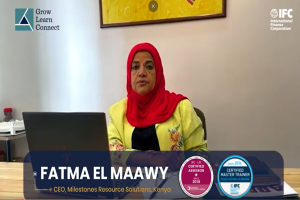How interactive are you?
Which do you prefer: to sit in a room and listen to a speaker talk for four hours straight or to hear a few concepts and then figure out how you can use it for your own purposes? Most people will tell you that they prefer the latter. In general, adult learners prefer to learn by taking some new information and immediately applying it to a real-world problem. On the other hand, most adults who have to teach others tend to prefer the show-and-tell method because it is easier to create and gives the trainer greater control. This conundrum only gets worse when you are developing self-study online courses. How can you overcome this challenge? Begin by considering the types and purposes of the interactivities in your course:
- Focus and navigation: The lowest level of interactivity, these actions require clicking to open tabs, flip cards, or move to a different section of the course. This helps learners in two ways: It maintains focus by giving learners something to do beyond reading and it gives them some control over the sequence of their learning. However, these interactions do little to increase comprehension or application.
- Recall: This middle level involves fill-in-the-blank, multiple-choice, or mix-and-match questions. These typically help learners recall content or can check their comprehension. While the recall is an important tool for the retention of concepts, it still keeps information at the theoretical level.
- Application: The highest level of interactivity requires learners to consider or use the content they just learned. Case studies, action planning, or scenario-based multiple-choice questions can help viewers convert concepts into actionable steps.
Ideally, courses should contain a mix of all three levels. If you are developing or reviewing a new self-study online course, ask yourself the following questions to make sure your course is as effective as possible:
- How much of your course is interactive? Try to make at least 25% of the reading be some type of interaction or activity.
- What is the purpose of the course: giving information or building skills? If the latter, make sure at least one or two activities provide some level of feedback.
- Of all your activities, how many are at each level of interactivity? Make sure at least two of the interactions are at the application level and another two or three are at the recall level.
Photo by krakenimages on Unsplash





